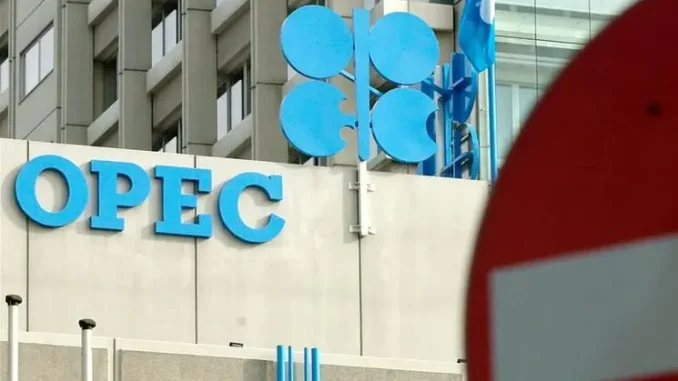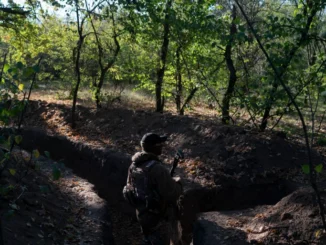
OPEC+ leaders Saudi Arabia and Russia are set to keep tightening the oil market into the autumn, announcing Aug. 3 they will extend their supply cuts through at least September.
Saudi Arabia will continue the 1 million b/d cut that is holding crude production at a two-year low of 9 million b/d, while Russia is tapering its 500,000 b/d export cut for August to 300,000 b/d for September.
In a statement, the Saudi energy ministry said the kingdom’s output could go even lower, if needed.
“This additional voluntary cut comes to reinforce the precautionary efforts made by OPEC+ countries with the aim of supporting the stability and balance of oil markets,” according to the statement, carried on the official Saudi Press Agency.
Key OPEC+ ministers, including Russia’s Alexander Novak and Saudi counterpart Prince Abdulaziz bin Salman, will discuss output strategy and market conditions at an Aug. 4 meeting of the Joint Ministerial Monitoring Committee (JMMC).
The Saudi and Russian measures come on top of some 1.2 million b/d in collective OPEC+ voluntary reductions that have been in force since May.
Dated Brent prices have risen 12.3% since the beginning of July to hit $84.18/b on Aug. 3, thanks in part to the Saudi cut, but only after two months of being rangebound between $70-80/b.
OPEC+ officials have blamed speculators, rather than supply and demand fundamentals, for preventing a breakout in crude prices, with headlines about global macroeconomic weakness outweighing bullish indicators on oil consumption and OPEC+ output restraint.
But the gamut of forecasts on oil demand reflects a lack of clarity over the market’s prospects. The International Energy Agency on July 13 cut its 2023 oil demand growth estimate by 220,000 b/d to 2.2 million b/d.
In contrast, OPEC revised up its 2023 global oil demand growth forecast to 2.44 million b/d on the back of a stronger Chinese economy, in a report also released July 13.
Deeper cuts?
Market watchers had been closely watching for indications of Saudi Arabia’s intentions ahead of the JMMC meeting.
The kingdom had surprised the market with its announcement of a 1 million b/d cut for July that was later extended through August. It committed Saudi Arabia to keeping its crude production at its lowest since mid-2021, as pandemic-prompted OPEC+ cuts were being unwound.
Not including the pandemic and the September 2019 attack on Saudi Aramco’s Abqaiq crude processing facility, it would be at an output level last seen in 2011.
The cuts could be “extended and deepened,” the Saudi energy ministry said in its statement.
Analysts with S&P Global Commodity Insights said maintaining the cut would help keep oil prices supported above $80/b through the end of the year, though any upside would be capped by high levels of OPEC spare capacity and non-OPEC supply growth.
Russian questions
Russia has grappled with Western sanctions that led many traditional buyers of its oil to move to alternative suppliers. In February, the country announced a 500,000 b/d production cut in retaliation for the sanctions and a G7 price cap, to be implemented until the end of 2023.
A second 500,000 b/d export cut was introduced for August.
“Within the efforts to ensure the oil market remains balanced, Russia will continue to voluntarily reduce its oil supply in the month of September, now by 300,000 b/d, by cutting its exports by that quantity to global markets,” Novak said in a statement.
However, Novak and other officials have not said which export level the cuts would be based on, nor have they specified if crude and/or oil products would be subject to the reductions.
Russia has taken longer than Saudi Arabia to meet its cut targets in recent months and faces economic challenges linked to its invasion of Ukraine and price discounts on its crude exports — a key contributor to the state budget.
Russia pumped 9.42 million b/d of crude in June, according to the latest Platts OPEC+ survey by S&P Global Commodity Insights, compared with 10.11 million b/d in February 2022, when Russia invaded Ukraine.
Russian oil producers’ economics have improved since its first voluntary cuts were announced, as they benefit from higher prices, as well as a weaker ruble exchange rate to the US dollar.
Russia’s crude export earnings are dollar-denominated, while oil production costs are mainly in rubles.
Peace talks
Saudi Arabia and Russia co-chair the JMMC, which also includes Iraq, the UAE, Kuwait, Nigeria, Algeria, Venezuela and Kazakhstan.
The JMMC is tasked with monitoring market conditions and making recommending changes to production policy, if needed, to the wider 23-country OPEC+ alliance.
The Aug. 4 meeting, which is set to convene online at 1:30 pm Vienna time (1130 GMT), comes ahead of Saudi-led Ukraine peace talks, aimed at ending a conflict which has had a major impact on commodities prices and trade flows.
The next full OPEC+ ministerial meeting is scheduled for Nov. 26.



